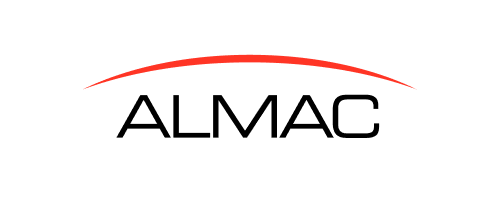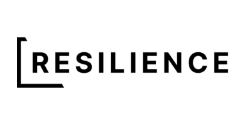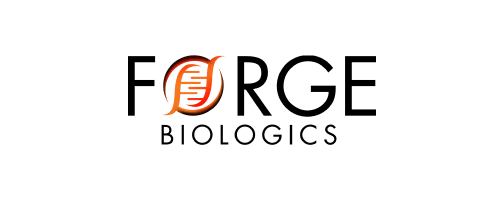How Veeva LIMS is Helping Forge Biologics Scale QC for Rapid Growth
“Shifting from a paper-based documentation practice to Veeva LIMS will streamline method execution while minimizing documentation errors, increase data accessibility and visibility, simplify processes for generating COAs and COTs, and deliver more value to clients.”
Rapid growth in demand for cell and gene therapy manufacturing services has helped startup contract development and manufacturing organizations (CDMOs) like Forge Biologics, a member of Ajinomoto Bio-Pharma Services. However, it has also challenged them to develop robust, scalable manufacturing and quality control (QC) approaches as they take on more projects in a changing market.
“As our client portfolio and internal projects increased, paper documentation to manage the volume of tests performed for product characterization, release, and stability is no longer scalable,” says Andrew Laughhunn, Senior Director of QC analytical testing. Forge implemented the Vault Unified Quality platform, including QMS, QualityDocs, and Training, as foundational elements in establishing a modernized operation. The next phase was to optimize the QC labs by implementing a cloud-based LIMS, Veeva LIMS.
Now, Veeva Vault holds all of Forge’s QA and QC documentation, harmonizing quality processes. “If we have a result that is out of spec or out of trend in Veeva LIMS, it triggers a quality event in Veeva Quality,” Laughhunn says, but the data will also be stored in the LIMS. In the past, anyone who needed to document a quality event would have had to compile all the relevant information from the QC paper-based documentation system and transpose it into Veeva Quality.
Eliminating the risks and limitations of paper
“Implementing Veeva LIMS was more than a typical IT implementation project; it was a full QC business project,” says Laughhunn. Rather than simply lifting and shifting its QC processes to the cloud, Forge adopted new streamlined business workflows and processes.
This is especially true for certificates of analysis and testing (CoAs and CoTs), which confirm that products meet client specifications. In a traditional, paper-based system, reviewing CoAs is incredibly time-consuming. QC analysts and managers must go through hundreds of pages of documentation to verify that the results met acceptance criteria and that testing was performed correctly.
Once QC testing and review of data is complete, an analyst or manager must manually add data to the CoA forms, and all raw data must be scanned. After the CoA has been populated, a manager must review all associated raw data to ensure that numbers align with client specifications and other documents in the QMS.
Streamlining QC workflows and processes
With Veeva LIMS, the CoA is electronically aligned with specifications so that CoA fields are filled out automatically, saving 20 to 30 hours of review and data input each time a product is manufactured. “Thinking about the time and effort we can redirect to other priorities is exciting,” Laughhunn says, “especially when you factor in the savings that will accrue as the business grows. Now, we can focus on testing, the results, and the science.”
Veeva LIMS streamlines method execution while minimizing documentation errors, simplifies CoA and CoT generation, and delivers more value. Moreover, the new solution provides the data transparency and portability required to demonstrate GMP readiness to clients as they develop plans for manufacturing Phase III and commercial vectors. “Clients will want easy access to data to glean insights and trends in assay performance, and Veeva LIMS will enable this to happen,” Laughhunn adds, noting that the new system can be readily integrated with middleware and connected to Forge’s enterprise resource planning (ERP) in the future to facilitate the development of client dashboards.
Automating stability testing reports
Until now, Forge has executed the stability program manually, using controlled documents to track stability sample pull dates. Close collaboration is required to ensure test samples are pulled at just the right times and results are compiled correctly. Then, the team must manually transcribe the resulting data into a stability report, and QC and QA must review the report for accuracy. Each of these reports can be quite lengthy, occasionally exceeding 20 pages, and any transcription errors result in the need to repeat the entire process.
Veeva LIMS will automatically track sample pull dates and send email alerts to the QC team to prevent missing any sample pull dates. It will also allow the team to generate stability reports directly from Vault LIMS, preventing transcription errors. As a result, Laughhunn explains, it will greatly minimize deviations associated with missing stability sample pull dates and save the QC team a significant amount of time.
Strong user adoption
End-users have readily adopted Veeva LIMS, Laughhunn notes, attributing acceptance to the way his team approached the rollout. A quality team manager with a background in computer programming and IT was assigned as a project manager. This person’s job was to ensure that analysts’ needs and preferences were conveyed clearly to the software developers — down to details such as dropdowns or formatting. This level of customization provided a resulting system that was easy for the QC team to use. “Once the analysts understood the importance of their input, they provided outstanding feedback”, Laughhunn says.
Collaboration with Veeva’s team was also crucial. “We’re a busy high-growth CDMO, and our priorities are routinely shifting. The Veeva team took the lead on clearly communicating what they needed for us to meet our implementation window,” says Laughhunn.
Forge is already running several programs and documenting and generating reports within Veeva LIMS. “It’s saving our analysts countless hours. It’s saving my management team hours and driving a lot of benefits for our clients, who now have more visibility into their data and easier access to results,” says Laughhunn. He plans to devote his new-found time to helping team members develop professionally and ensuring they have what they need to succeed.
More Customer Stories
Explore and learn more
Read Customer Story
Almac Clinical Services: Transforming Quality Processes & Collaboration with Veeva QMS

Watch Video
Resilience: Accelerating Innovation with Unified Quality

Read Press Release
AmplifyBio to Drive Quality Excellence with Veeva Quality Cloud

